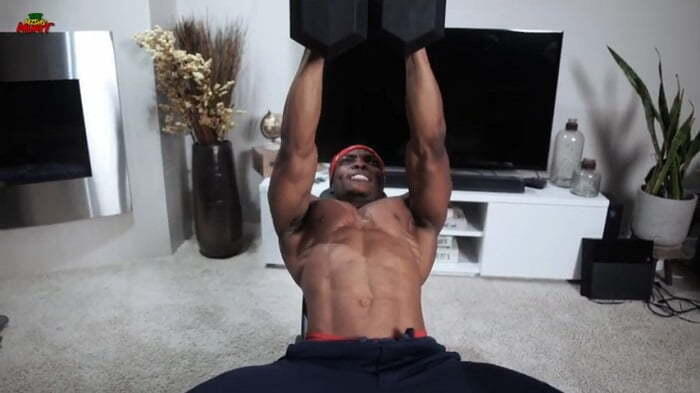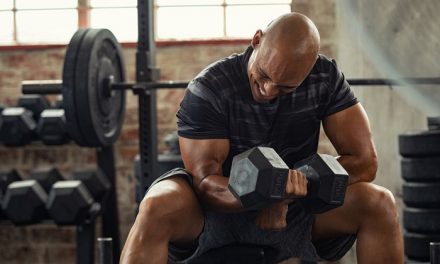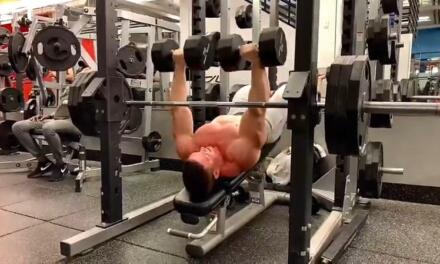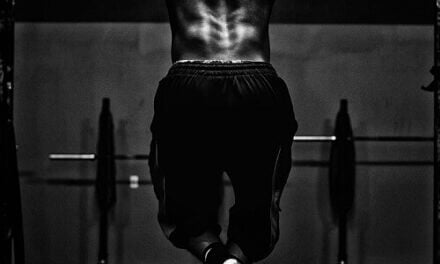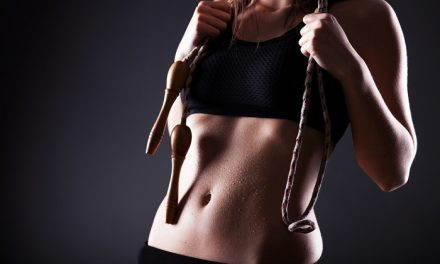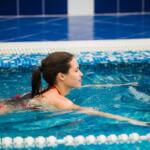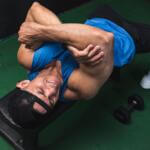When you buy a weight bench for your home gym, it opens up a whole new world of possibilities for adding muscle mass to your upper body, and depending on what type of bench you have; you can also work your lower body as well.
Weight Benches Essential For Bench Presses
A weight bench allows you to expand your floor-based presses or standing presses into bench presses and allows you to add pullovers, step-ups, and many other movement variations.
Weight benches have always been an essential piece of kit for anyone looking to get fitter and stronger. They reduce the risk of injury and are designed to take heavyweight loads giving you a safe and reliable base to work from.
Today I’ll show you the 7 Best Weight Bench Exercises to add muscle mass fast and safely using an adjustable weight bench. But first, we need to make sure you have access to the right type of weight bench?
Different Types of Bench Quick Look!
There are two different types of weight bench. One is the flat bench, specifically designed for bench press and heavyweight loads.
The second type of bench is the adjustable weight bench. Adjustable weight benches are the best choice for home gyms as they have a variety of back pad positions from decline, flat, and incline, to a near-vertical for seated shoulder press.
Adjustable benches allow you to perform numerous upper body exercises. They are an excellent choice for people who dont have the space to house a separate incline and flat bench. They work out much cheaper than buying two separate benches and will save you a lot of space in your home gym.
7 Best Weight Bench Exercises With Dumbbells
1. Bench Press
The great thing about dumbbells is they offer a greater range of motion than barbells allowing you to build even more strength in the pectoral area. When using the correct form, you’ll also give your triceps a good workout and work the shoulders as well.
One mistake many people make when bench pressing with dumbbells is they forget to squeeze at the top of the movement. This ensures the muscles you are targeting remain active and engaged.
Purpose of Exercise: To develop the mass and strength of the middle and out pectoral muscles.
1. Adjust your bench to a flat position. Lie on it with feet flat on the bench or floor. Take a dumbbell in each hand and hold the weights straight up overhead. Turn the dumbbells so that your palms facing forward.
2. Lower the weights toward your outer chest, concentrating on keeping them fully balanced and under control. Lower them as far as you can, feeling a complete stretch in the pectoral muscles. Press the weights back up and lock your arms straight overhead. (squeeze 10 seconds)
2. Incline Bench press
The incline bench press is very similar to the flat press, except this time we adjust the back pad of the bench, so we perform the exercise at an incline, thus targeting different parts of the pectorals.
You can adjust your bench at various incline angles if you wish to. If you choose to adjust the incline for each work workout, it’s best to begin at a steep incline and work downwards towards a flatter angle or increase the angle set to set.
Purpose of exercise: To develop the middle and upper pectoral muscles.
1. Take a dumbbell in each hand and lie back on an incline bench. Clean the dumbbells and hold them at shoulders height, palms facing forward.
2. Brace your core and press both dumbbells straight up over your chest as you exhale, then lower them back to the starting position. As you lower the dumbbells, your elbows should come down at roughly a 45-degree angle to your torso
3. Dumbbell Flys on A Flat Bench
Dumbbell flys are an excellent exercise that targets all areas of the chest, but in particular, dumbbell flys target that difficult to train area that creates the desired separation look. Some believe that this moment is better than flat presses for stimulating chest fibers across the spectrum.
Purpose of exercise: To develop the mass of the pectorals.
1. Adjust your bench to the flat position and lie on it, holding dumbbells at arm’s length above you, palms facing each other.
2. Lower the weights out and down to either side in a wide arc as far as you can, feeling the pectoral muscles stretch to their maximum. The palms should stay facing each other throughout the moment. Bend the arms slightly as you do the movement to reduce the stress on the elbows.
3. Bring the weights to a complete stop at a point in line with the bench, your pectorals stretched as much as possible, then lift them back up along the same wide arc as giving someone a bear hug. Bring the weights back to the starting position and then contract the pectorals further, giving a little extra flex to make the muscles work that much harder.
4. Single-Arm Dumbbell Rows
Dumbbell rows are one of the best exercises you’ll find to help strengthen and build the muscles in your back.
They’re easy to do, and it requires just one dumbbell to load the moment. And as its unilateral exercise meaning, we train one side of the body at a time. Single arms moves help to even out muscular imbalances and burn a ton more calories over time because we are essentially doubling up our workloads.
Purpose of exercise: To independently work each side of the back.
1. Taking a dumbbell in each hand, bend forward from the waist until your upper body is nearly parallel to the floor. Place your free hand on the bench for support. Begin with the weight hanging down at arm’s length, feeling the fullest possible stretch. Turn your hand so that the Palm faces towards your body.
2. Keeping your body steady, lift the weight up to your side, concentrating on doing the work with the back rather than the arms. Lower the weight, keeping it under control. Finish your repetitions with this arm, then repeat with the other arm.
5. Seated Incline Dumbbell Curls
The seated dumbbell curl is basically a seated version of the standing curl. Still, many people prefer the seated incline version as it allows for a greater range of motion. Giving the long head of the bicep a greater stretch. It’s also one of the best exercises for maximizing the biceps peak.
Purpose of exercise: To Stretch the biceps and for the overall development of the bicep
1. Adjust your weight bench back pad to about 55-60 degrees. Sit back on the incline holding a dumbbell in each hand. Using a palms-up grip curl the weights forward up to shoulder level.
2. Slowly lower the weight under control back to the starting position.
6. Seated Dumbbell Shoulder Press
One of the most popular shoulder exercises for bodybuilders is the seated shoulder press. This movement helps you build bigger, wider, and more symmetrical deltoids. Seated presses are an exercise that should definitely be included in your exercise routine, especially if your shoulders are lacking in strength and development.
Purpose of exercises: To train the front and side deltoids
1. Adjust your weight bench to a near-vertical or vertical position. Anywhere between 80-90 degrees is fine. Hold one dumbbell in each hand at shoulders height, elbows out to the sides, palms facing forward.
2. Lift the dumbbells straight up until they touch at the top, then lower them again as far as possible.
7. Dumbbell Tricep Kickbacks
Triceps are a bigger muscle than people think, making up two-thirds of the upper arms, so if you’re after big arms, it’s vital to train the triceps hard. Tri-ceps kickbacks are an excellent isolation exercise that works all three heads of the tri-cep, especially the lateral head.
Purpose of exercise: To develop the triceps, especially the upper area.
1. With your bench in the flat position, place one knee, shin, and foot on the bench. Put one hand on the bench, and with a dumbbell in the opposite hand, bend your arm and raise your elbow back and up to about shoulder height, elbow close to your side, and letting the dumbbell hang straight down below it.
2. Keeping your elbow stationary, Straighten your arm backward until it is parallel to the floor. Contract your triceps at that top portion of the lift. Slowly lower until your arm is back at the 90° angle
Tips on Choosing An Adjustable Weight Bench
If you’ve had enough of overcrowded gyms and you’d love to try these exercises at home, but you dont have an adjustable weight bench yet? We’ve put together some top buying tips to make the transition from commercial gym to home gym that much easier.
Suprignly you dont have to spend a ton of money on an adjustable weight bench. I’ve reviewed well over 50 of them in the past 5 years, and there are some impressive weight benches available for under $200.
All you have to do is make sure your bench has a few important features (check our tips below), and you shouldn’t run into any problems.
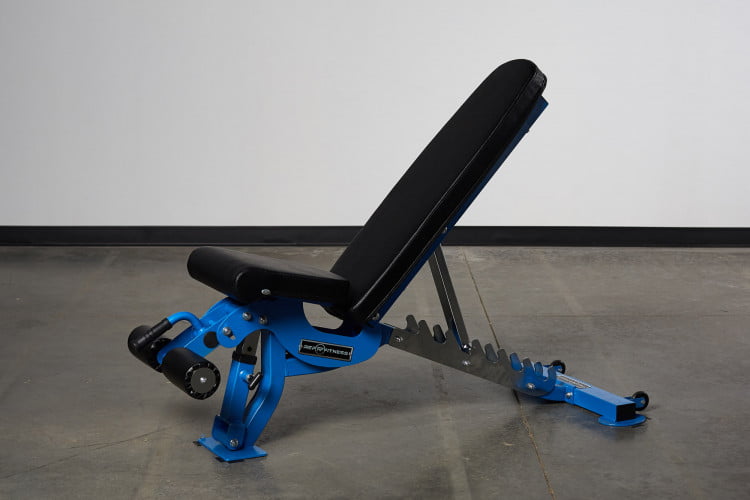
Rep Fitness AB-3000 Adjustable Weight Bench
1. Weight
The weight of an adjustable bench is the first thing you should consider. You dont want a cheaply built lightweight bench. Light benches typically have stability issues, and because of the cheap materials used dont last long.
We need to look for benches that weigh at least 40lb. The extra weight will help keep the bench planted to the floor, which helps prevent any moment when lifting. The weight of a bench is also a good sign of the quality of material used in the build. The heavier, the better.
2. Veristility – Back Pad Adjustment Angles and Seat
Most adjustable benches, even the cheapest ones, will come with at least 3 back pad positions flat, incline, and near-vertical.
The only problem with many of the cheaper benches is the near vertical is too low. When choosing an adjustable bench, make sure the back pad adjusts to at least 80 degrees for seated shoulder press. 85 degrees being optimum. A too low angle, and you will not target the shoulders fully.
Thankfully most adjustable benches around the 100-200 dollar mark come with a number of back pad positions, including decline and a few incline angles.
If you want to make the most from your incline pressing workouts such as incline presses etc., an adjustable seat is vital. Adjustable seats stop your butt from slipping down the bench in low incline positions. They provide you a stable base to press from.
Agin adjustable seats are now commonplace with most adjustable benches but be careful. There are still a few out there that dont include an adjustable seat. Avoid these benches.
3. Padding/Thickness
The gold standard for weight bench padding is high-density foam padding, and it’s something you can find even on low-cost weight benches. Why high-density foam? Because this stuff isn’t too soft to cause stability issues nor too hard to be offputting, it’s just right for our workout needs.
If you can, try to choose a bench with 2″ high-density foams padding.
Weight Capacity
The problem with the weight capacity is that many of the affordable weight benches claim high weight capacity yet are built from cheap, low-grade steel and weigh little more than 25lb. This type of bench will not take high weight loads regularly, so even though the manufacturers may claim a high weight capacity, it could be dangerous to take a cheap weight bench to its max every day.
When it comes to weight capacity, look for realistic capacities and benches with heavy-duty frames, this type of bench will take its max capacity with ease. Something like the Marcy SB-670, the Marcy is a reasonably cheap bench ($130) but boasts a heavy-duty frame and realistic capacity of 600lb. An excellent bench for beginners and intermediates.
If you want to spend a little more and are a serious lifter, check out Rep Fitness. These guys sell some outstanding heavy-duty benches built to take 1000lb capacities prices start at around $250 for the Rep AB3000 bench, currently my favorite low-cost heavy duty bench.
References & Acknowledgments
Some Excerpts are taken from the excellent Encyclopedia of Modern BodyBuilding (Arnold Schwarzenegger)
And big thanks to Scott Herman at Musclestrength.com for the awesome how-to videos

